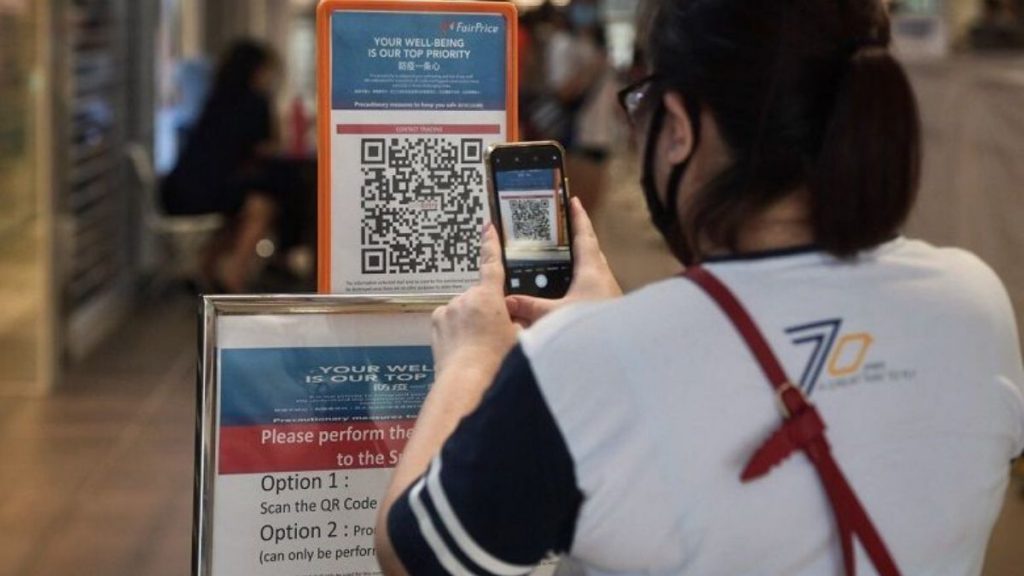Author’s Blurb: I haven’t gone to restaurants, malls or grocery stores since the start of the MCO, so I have yet to partake in contact tracing. Several solutions have been implemented all over as per government regulations, but as time passes, issues are cropping up.
As innovative as the idea of contact tracing is, it comes with its own set of downsides. This applies to the multiple types of solutions that exist as well.
In this article, we take a look at the emerging issues that have been identified through the use of various contact tracing solutions to contain the spread of COVID-19.
Human Tracers (Manual Contact Tracing)
1. Risk Of Exposure
Usually done in-person by health authorities, this means that they would have to be in the same physical space with a potentially infected person.

Despite the PPE that they would be wearing and the hygiene standards that they have to uphold, they would still highly be at risk of infection.
2. Unable To Cover A Large Scale Of The Population
In terms of information accuracy, manual contact tracing is perhaps one of the best ways an individual can be held accountable to provide truthful information.
However, the method is slow and relies heavily on manpower (and the necessary safety gear), so it cannot sufficiently trace infections at the same rate they’re spreading.
3. Useful Only For Contacts That The individual Can Identify
This method requires the infected individual to be able to recall where they visited and who they’ve met, but more often than not, we would only be able to recall contacts whom we actually recognise.
Strangers might be left out of the equation, especially if the premises visited by the infected individual didn’t already have a contact tracing registry in place.
Traditional Log Books
4. Handy Tools For Potentially Spreading Infection
Despite the many available digital contact tracing solutions that already exist for free, some businesses are still opting to register guests through log books.
This is an issue since multiple strangers will have physical contact with the pen/paper and book, leading to a higher risk of possible infection compared to contactless solutions like QR code scanning.
5. Personal Information Is Easily Faked
Unlike digital contact tracing solutions where OTPs (one time passwords) and other verification methods can be used to validate phone numbers, log books can’t hold guests to the same accountability.
Senior Minister and Defence Minister Ismail Sabri Yaakob already had to speak out on this issue and urge Malaysians not to fake their information when registering via QR codes, so what’s stopping people from doing the same with a log book and getting away with it?
6. Information Can Be Stolen
If the log book is laid open in an unsupervised situation, it’d be easy for someone to just snap a picture of people’s personal information to be misused. In a more extreme situation, the whole book could just get snatched away.
While there haven’t been any official reports of such incidents happening, this is another risk to consider when businesses opt to use the traditional log book registry, and particularly so if they leave it unsupervised.
Furthermore, your data will be collected without disclaimers and privacy policies to hold the businesses accountable.
Digital Contact Tracing Solutions

The types of solutions that fall under this category would mainly be:
- QR code registries,
- Bluetooth tracking apps,
- GPS based location tracking apps.
7. False Positives May Be Reported
Because Bluetooth can usually penetrate walls, if you and an infected person are in the same building but separated by a wall (and would never come into direct contact with one another), you could still be falsely alerted. This could also happen if you’re practicing social distancing but remain out in the open. It all depends on how strong the Bluetooth signal is in different locations.
For some, this might lead to unnecessary worries, for others, it might just be mildly annoying to consistently be mistakenly alerted.
(In my personal opinion, I don’t see this as much of a problem, as it’s always better to be safe than sorry, but apparently enough people have complained about this that it’s become a repeatedly reported issue.)
8. Lack Of Widespread Adoption
When it comes to contact tracing apps, at least 60% of a population has to have them downloaded in order for the solution to work effectively.
However, the take-up rate has been rather low. Singapore’s own TraceTogether currently only managed to get 20-25% of its population (about 1.5 million residents) to download it.
While the solution may work, it lacks enough data to ensure that a majority of users can actually be traced and protected.
9. Cybersecurity & Privacy Concerns
One thing that has been a major roadblock for convincing people to use digital contact tracing solutions has been the uncertainty about who gets to access their data, and what it might be used for.
Bluetooth tracing reveals less detailed information about a person’s location compared to a GPS based location tracking app, but it still leaves devices open to cyberattacks, especially if mistakes are made on the developer’s part.
These concerns, and more, lead to a slow adoption of these solutions, making contact tracing less effective.
10. Individuals Without Smartphones Are Left Out
According to Statista, 18.9 million Malaysians owned a smartphone in 2019, out of our estimated population of 29.4 million Malaysians in 2019, as reported by DSOM.
This means that about 36% of Malaysians might still not own a smartphone today, and this doesn’t even take into account what percentage of our 3.3 million non-citizen population lacks one.
In 2017, it was estimated that 75% of Malaysia’s population lived in urbanised areas. One can assume that the percentage may have increased by now, and that would mean that a significant number of people in cities and towns still don’t own a smartphone.
If they’re out and about, they will be completely unable to enter the many premises that utilise digital contact tracing solutions.
They will also be unable to download tracing apps that use Bluetooth or GPS based location tracking, rendering them untraceable and putting them and others at risk (if they’re carriers).
General Issues With Contact Tracing Efforts
11. People May Refuse To Be Contacted
People who leave the wrong information are one problem, but those who leave their information unwillingly may also cause a problem when they need to be contacted.
They may not pick up calls or read messages from the authorities to inform them that they need to be tested.
As much as we’d like to believe that very few of us would do this, even that small number of people who would act like this could jeopardise contact tracing efforts and successes thus far.
12. Personal Information Might Be Used For Marketing Purposes
As an incentive for adoption by businesses, digital contact tracing solutions might offer them the ability to use the data for marketing purposes.

Some will allow users to opt out of this, but at the end of the day, consumers can’t be 100% sure that their decision will be respected. We can only choose to trust in the integrity of the system and businesses.
13. Different Solutions Lead To Fragmented Information
Currently, a variety of QR code solutions, Bluetooth tracking apps and GPS based location tracking apps are being used by different businesses and premises, and this isn’t even taking into account log book registries.
Rolling out contact tracing efforts is no doubt faster with various providers in different locations, but one problem is that the information would be fragmented.
If widespread contact tracing is to be done effectively, this could be a hindrance, since extracting information from all the different registries would take longer than if it were kept in one centralised system (which, of course, comes with its own set of risks).
-//-
There is no “perfect” solution on the market yet, and it’s unlikely that one will be developed overnight. However, I believe that the technology will keep improving from here, and we will learn how to adapt to it.
Regarding the trade-off of personal privacy for the benefit of public health, I’m of the opinion that if we’re going out while the pandemic is still ongoing, it’s a responsibility we should take on.
To increase the take-up rate, digital solution providers should provide more specific information to users. We also need more discussions about the impact and effect of these technologies on the public and individuals, and frameworks must be put in place to properly protect the data and privacy of users.
Using the right message to market the usage of these solutions could also go a long way. For example, instead of telling people why they should care about protecting strangers, bring it closer to home: partake in contact tracing to protect your families and friends.
Bottom Line: We all have a role to play in ending this pandemic, whether it’s by staying at home or being a responsible individual when going out. If I were to leave my house, one thing I’d practice is to assume that everyone I see is an asymptomatic carrier, and act accordingly.
- You can read more COVID-19 related articles here.
Featured Image Credit: Straits Times














